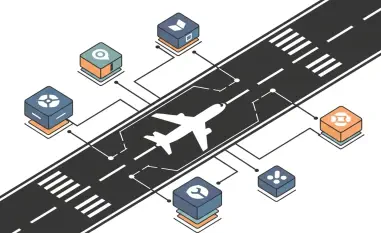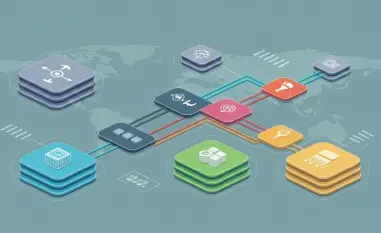What happens when a cyberattack halts the flow of electricity to millions of homes or disrupts a nation’s transportation network in mere minutes, leaving entire communities stranded and vulnerable? This chilling reality looms over critical infrastructure worldwide, where operational technology (OT) systems are both lifelines and vulnerabilities. In a groundbreaking move, the United States and five international partners have unveiled a unified OT security taxonomy, setting a new standard for protecting these vital systems. This isn’t just another policy paper—it’s a seismic shift in how global cybersecurity is approached, promising to reshape the defense of industries that underpin modern life.
The significance of this development cannot be overstated. With cyber threats growing in sophistication and scale, fragmented security measures across borders and sectors have left dangerous gaps for attackers to exploit. This taxonomy offers a shared framework—a common language and set of guidelines—that aims to unify efforts against risks like ransomware and state-sponsored hacks. It’s a bold step toward safeguarding everything from energy grids to manufacturing plants, ensuring that the backbone of society remains resilient in an era of relentless digital danger.
A New Era in Cybersecurity: Why It Matters
The stakes in cybersecurity have never been higher, especially for OT systems that control essential services. A single breach in a water treatment facility or a power grid can cascade into catastrophic consequences, affecting millions and costing billions. This unified taxonomy, developed through international collaboration, marks a pivotal moment in addressing these risks head-on. It’s not merely a technical tool but a global signal that disjointed defenses are no longer an option in the face of borderless cyber threats.
Beyond the immediate threat, this initiative reflects a broader recognition of interconnectedness. As OT systems become more digitized and linked to the internet, their exposure to attacks multiplies. The framework introduced by this partnership seeks to close the loopholes that have plagued industries for years, offering a chance to stay ahead of adversaries who exploit inconsistency. This is about building a fortress of cooperation, where nations and sectors align to protect what matters most.
The impact extends to everyday life in ways that are often unseen. From ensuring that hospitals have uninterrupted power to keeping transportation networks operational, the ripple effects of a stronger OT security posture touch everyone. This taxonomy isn’t just for tech experts—it’s a foundation for stability in a world increasingly reliant on digital infrastructure, making its adoption a priority for all stakeholders involved.
The Escalating Danger to Operational Technology
Operational technology forms the unseen backbone of society, managing everything from factory assembly lines to national energy supplies. Yet, this critical role makes OT a prime target for cybercriminals and hostile entities seeking to disrupt or destroy. High-profile incidents, such as the ransomware attack that paralyzed a major pipeline in recent years, underscore the fragility of these systems when defenses are inconsistent or outdated.
The challenge lies in the growing connectivity of OT environments. As industries embrace digital transformation, the attack surface expands, creating new entry points for malicious actors. A report from a leading cybersecurity firm indicates that OT-related attacks have surged by over 40% in the past two years, with many exploiting gaps caused by differing security standards across regions. This patchwork approach has proven unsustainable against threats that know no borders.
Addressing this danger requires more than isolated fixes—it demands a cohesive strategy. The urgency for a unified response is evident as attackers grow bolder, often targeting multiple sectors simultaneously. Without a standardized method to identify and mitigate risks, critical infrastructure remains a ticking time bomb, highlighting the desperate need for a framework that can adapt to an ever-evolving threat landscape.
Unpacking the Unified OT Security Taxonomy: Core Elements
At its heart, the unified OT security taxonomy is a practical roadmap for change, built on several key components that drive its effectiveness. A standardized language tops the list, enabling clear communication about threats and vulnerabilities across nations and industries. This eliminates the confusion that often hampers rapid response, ensuring that a power plant in one country can collaborate seamlessly with a transport hub in another.
Another pillar is threat categorization, which organizes risks—from malware to insider sabotage—into a structured format tailored to specific sectors like healthcare or logistics. Coupled with this are global best practices, offering actionable guidelines for security controls that can be implemented consistently, regardless of location. Early adopters of similar frameworks have reported a 30% faster incident response time, a statistic that speaks to the taxonomy’s potential to transform chaos into order.
The real-world impact of these elements is already visible. Consider a scenario where a utility provider in North America aligns its protocols with a manufacturing firm in Europe using this shared system. Such alignment not only strengthens individual defenses but also builds a collective shield against global cyber threats. This taxonomy is a catalyst for resilience, turning fragmented efforts into a unified front that can withstand even the most sophisticated attacks.
Expert Insights: What Leaders Think of This Initiative
The power of this taxonomy lies in its collaborative foundation, drawing strength from the diverse perspectives of its international creators. A senior cybersecurity official from a partnering nation emphasized, “This framework is a breakthrough in how threats to OT are understood and countered—unity is the strongest weapon available.” Such statements reflect a shared belief that fragmented approaches have long undermined effective defense.
Industry research backs this sentiment with hard numbers. A recent study by a prominent security consortium revealed that 85% of OT breaches result from miscommunication or mismatched protocols among stakeholders. This staggering figure highlights the critical need for a common playbook, a need that the taxonomy directly addresses by fostering clarity and coordination across borders and sectors.
Testimonials from the field add further weight to its value. A leader in the transportation industry shared how early adoption of the taxonomy’s draft principles helped avert a potentially devastating attack on their control systems. These voices—spanning policy, research, and practical application—demonstrate that this initiative is not just theoretical but a proven tool with tangible benefits for those on the front lines of cyber defense.
Putting the Taxonomy into Action: Practical Steps
Implementing the unified OT security taxonomy is a task for every organization dependent on OT systems, not just policymakers or tech giants. The first step involves a thorough assessment of current security measures, mapping them against the taxonomy’s categories to pinpoint weaknesses. This process helps identify blind spots, such as unsecured remote access points, that could be exploited if left unaddressed.
Training is another crucial component, ensuring that teams are fluent in the shared language and protocols outlined in the framework. This is especially vital for companies with international partners, where miscommunication can lead to costly delays during a crisis. Additionally, organizations are encouraged to join global forums or working groups to exchange insights on regional threats, aligning their strategies with the taxonomy’s recommendations for maximum impact.
Prioritization completes the approach, focusing efforts on high-risk areas like critical infrastructure control systems. By applying the taxonomy’s suggested controls to these vulnerable points first, entities can build a robust defense while contributing to a broader network of protection. This framework isn’t rigid—it’s a flexible foundation that adapts to unique operational needs, empowering organizations to safeguard their assets while strengthening global cybersecurity as a whole.
Reflecting on a Milestone in Cyber Defense
Looking back, the release of the unified OT security taxonomy by the United States and five global partners stood as a defining moment in the battle against cyber threats. It represented a collective resolve to shield critical infrastructure through standardized practices and unprecedented cooperation. This effort tackled existing vulnerabilities with precision, laying a groundwork that many industries came to rely upon.
The path forward demanded sustained commitment from all involved. Organizations were urged to integrate the taxonomy’s principles into their core operations, while governments needed to champion its adoption on a wider scale. Collaborative platforms offered a space to refine and expand the framework, ensuring it kept pace with emerging risks.
Ultimately, this initiative set a powerful precedent for future partnerships in cybersecurity. It underscored that only through shared purpose and unified action could the digital foundations of society be secured. The challenge remained to build on this foundation, driving innovation and vigilance to protect OT systems for generations to come.













